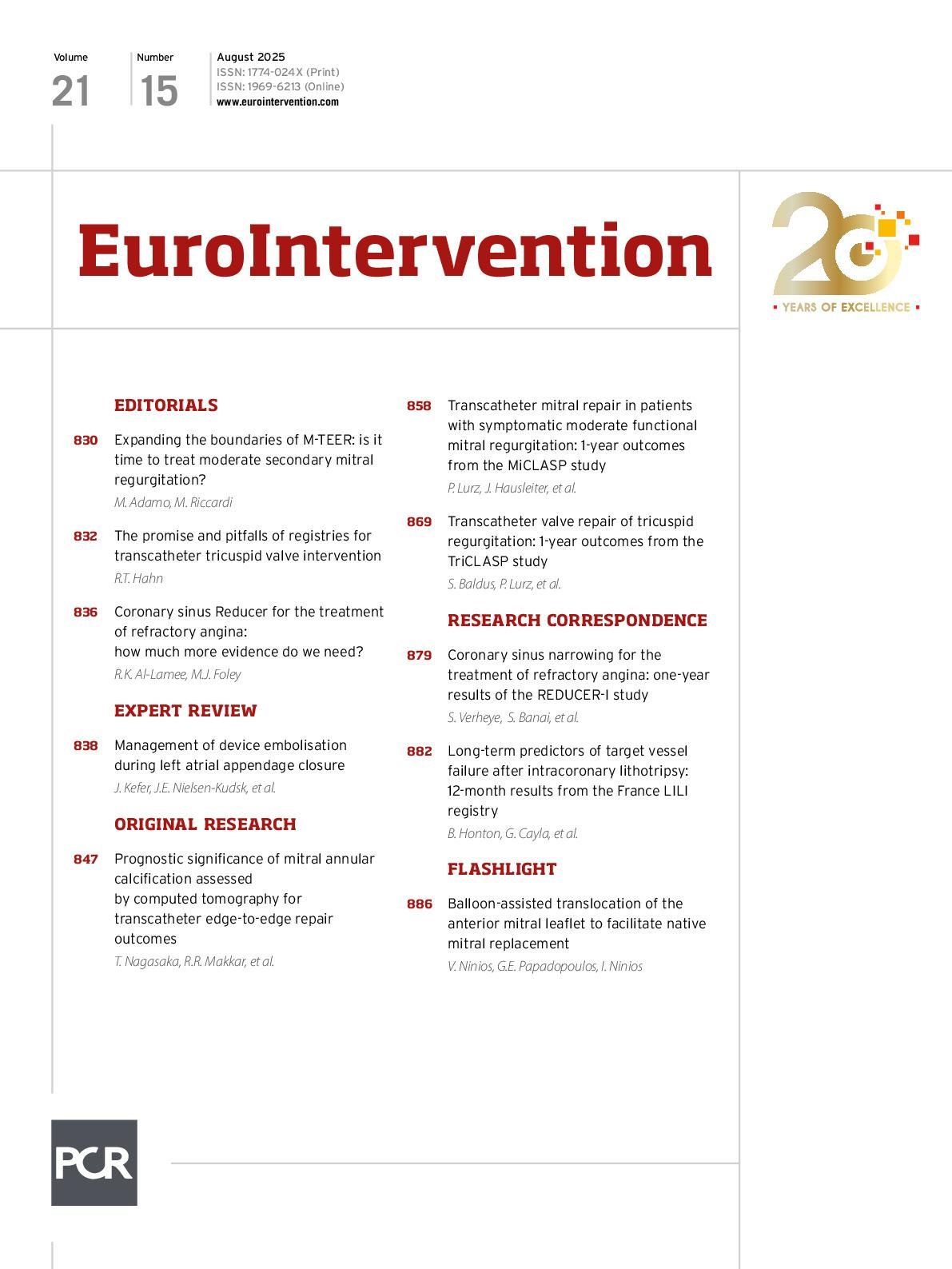Abstract
Background: Patients with tricuspid regurgitation (TR) are at high risk for morbidity and mortality, with poorer outcomes associated with increasing TR severity. Tricuspid transcatheter edge-to-edge repair (T-TEER) has emerged as a promising treatment option.
Aims: TriCLASP is a prospective, single-arm, European post-market study evaluating the safety and effectiveness of T-TEER with the PASCAL system to treat patients with ≥severe TR.
Methods: The TriCLASP study enrolled 300 patients to evaluate the safety and performance of T-TEER. Major adverse events (MAE), reduction in TR grade, and clinical, functional, and quality-of-life outcomes were assessed at 1 year.
Results: Enrolled patients had a mean age of 80.1 years, 52.0% were female, and 75.8% had ≥severe TR. Tricuspid regurgitation was reduced to ≤moderate in 87.7% of patients (p<0.001). The composite MAE rate was 1.7% at 30 days and 12.7% at 1 year. Kaplan-Meier estimates for survival and freedom from heart failure hospitalisation (HFH) were 88.3±1.9% and 83.2±2.3%, respectively. Annualised HFH rates decreased by 72.2% in the 12 months pre- versus post-procedure (p<0.001). Significant functional and quality-of-life improvements were observed from baseline to 1 year, including 74.5% of patients in New York Heart Association Class I/II, a 29.4-metre increase in the 6-minute walk distance, and an 8.3-point increase in the Kansas City Cardiomyopathy Questionnaire score (p<0.001).
Conclusions: The 1-year results of the TriCLASP study confirm the safety and effectiveness of T-TEER with the PASCAL system in patients with ≥severe TR. Patients experienced significant TR reduction, low mortality, high freedom from HFH, and significant improvements in symptoms, functional capacity, and quality of life.
Sign up for free!
Join us for free and access thousands of articles from EuroIntervention, as well as presentations, videos, cases from PCRonline.com

